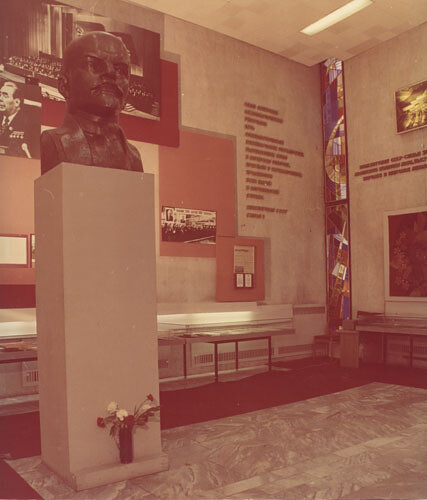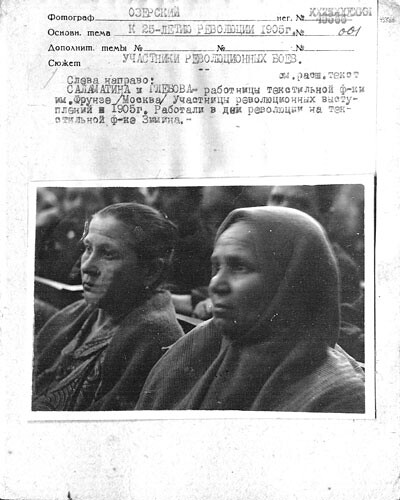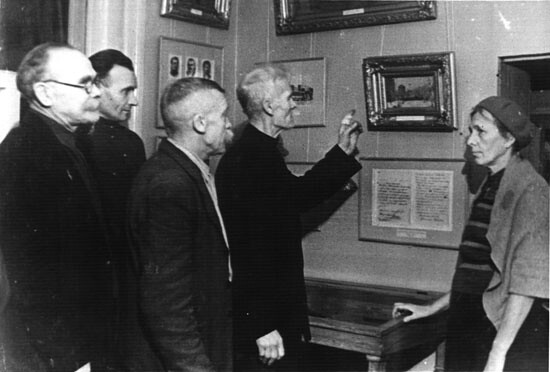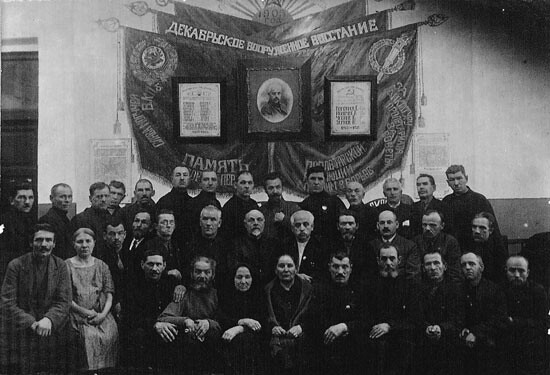The tradition of all dead generations weighs like a nightmare on the minds of the living.
—Karl Marx, The Eighteenth Brumaire of Louis Bonaparte
Since Baudelaire’s time, the artist has been imagined as someone rooted in the tradition of overcoming tradition. Artists have been obliged to keep abreast of fashion and spend their time in endless flânerie, thus resisting being stopped or captured in space. In the twentieth century, the public figure or activist was primarily a revolutionary, an adherent of the tradition of combating tyranny—at the extreme, an adept of permanent revolution. He or she fought against the limitations imposed by time, by specific historical periods, and this struggle was waged on behalf of a utopian future. The Bolshevik Trotsky wrote that he was always rooted in a tradition, but this tradition was called revolution.
The museum of the revolution and the museum of modernist art are meeting places for the politician and the artist fighting against the limitations of time and space; they are heterotopias that have paradoxically retained their importance despite the radicalism of certain twentieth-century thinkers who were opposed to any spatio-temporal capture. From this perspective, it is very important to study the transformations undergone by the Soviet museums after the victory of the proletarian socialist revolution. Their status cannot be reduced either to the modernist narrative of art history or to the avant-garde breakthrough into a future life free of social antagonisms. It would be even more inappropriate to interpret the museum experiment of the young Soviet state exclusively as a part of the propaganda policy launched by the Bolshevik party in the 1920s and ’30s. Rather, we are dealing with a paradoxical phenomenon of avant-garde museology, a boundless museum rooted in the dreams of the radical Russian thinkers, starting from the cosmist Nikolay Fyodorov, who viewed the museum as a scientific launching pad for the future resurrection of dead generations and for space expansion, and continuing to the Marxist museologists of the ’30s, who developed the concept of travelling museum laboratories for workers and peasants that were meant to help build the future socialist society as quickly as possible.


The discourse around the museum’s status in the twentieth century was essentially a discussion of the limits of emancipatory projects. It simultaneously pointed to the possibility that an imaginary future could exist in a special way in the “here and now” of museum space, which resembles other heterotopias identified by Foucault, such as the cemetery. And indeed, it is still assumed that capturing or recording any phenomenon (whether an event of public life or of art) in words or by placing it in a museum is tantamount to its death.
Clearly aware of this relationship, many members of the historical avant-garde called for the destruction of museums: “Stop showing dead artists!” In many respects, however, it has in fact been the extreme materialism of the museum, whose existence is focused on things—artifacts possessed of artistic significance, оr documentary evidence of revolutionary struggle—that has indicated the impossibility of overcoming the museum in the modern world.


The museum manifests a particular form of life after death. The desire to reset history, a perpetual tarrying at the zero point, itself begins to produce its own history. And perhaps this type of life is, paradoxically, one of the few means of experiencing history as such.
To identify the museum’s main theme, the lobby should be designed as a narrative of the central event of the Revolution of 1905, the December armed uprising.1The exploit of the Presnya workers was not useless. Their sacrifices were not in vain. The first breach was made in the edifice of the tsarist monarchy, a breach that slowly but steadily grew wider and undermined the old and medieval order.
—V. I. Lenin2At center: Ivan Shadr’s sculpture The Cobblestone Is the Weapon of the Proletariat or another sculptural group. The glass bays should be decorated with motifs invoking the fighting on the barricades in Presnya. Various artistic media can be used: color photographs, drawings on glass, colored mosaics, and so on.3
On the left wall: V. I. Lenin, 1891. Photograph.
Structurally, the musem has to exit time and space to occupy a meta-position that would preserve stability, on the one hand, while also being maximally filled with volatile content. The very intention of displaying revolutionary or modernist art in the museum is extremely contradictory. Resisting contraction into a single image, revolution is, rather, an example of interrupting the historical narrative, of a sublime, unimaginable experience (in the sense of being unamenable to capture in images). However, we know that there exists an extensive stock of images of revolution. The same can be said of modernist art, which is designed to capture the death of art again and again.
The museum operates in a specific way. It cannot claim to reveal the entire history of life or art. On the contrary, its deliberate insufficiency underwrites a full experience of history. As in the religious tradition, where apophatic expressions indicate the divine presence through negation, the museum points to historical experience itself through an obsessive, sometimes grotesque, exaggerated, and simplified representation of the history of revolution (whether in aesthetics or politics).
Just think: Can a bone from a mammoth really invoke in us the complex experience of humanity’s millenia-long struggle for survival? We can have this experience only by recognizing the bone’s extreme insignificance compared with the mass of matter that has undergone countless metamorphoses over that time. And Hitler’s towel? The fact that the villain was a simple man of flesh and blood only throws into starker relief Hitler’s deeds as a historical person.
[I]n the nineties two profound social movements converged in Russia: one, a spontaneous movement, a popular movement within the working class, the other, the movement of social thought in the direction of the theory of Marx and Engels, towards the theory of Social-Democracy.
—V. I. Lenin4On the right wall: N. A. Kasatkin, Strike. Pen and ink drawing.
On the right wall: Report by an industrial inspector at the Prokhorov Factory on illegal meetings of workers there. November 23, 1895. Photocopy.
After the 1930s, Soviet official art no longer thematizes this gap, this interruption in tradition. It becomes part of everyday life and as such rightfully enters historical museums and, of course, museums of the revolution, but only as an ancillary part of the exhibition that is not entirely a work of art but is suspended, rather, between scholarship, art, and everyday life. In any case, that was how it was supposed to be, if we take into account the views of the Marxist experimenters in museology, who subordinated all material artifacts and art objects to an academic historical narrative about the struggle for the emancipation of the oppressed classes. At the same time, by virtue of its specific status, the museum of the revolution could exist only as an artistic and scholarly project: it was not intended to reflect the public life of postrevolutionary society in its entirety.
In such a museum, the image of the revolution was presented from a biased position, the position of the Party: here there could be no “objectivity,” understood as the fullness and pluralism of the bourgeois museum of modernism. Moreover, the revolution, the sacred moment when Soviet history emerged, could find no other place in this history aside from the place of a revered idol that had forfeited its power. The Stalinist concept of museology dictated that the revolution should be situated in a strict institutional framework. Its character—sublime and resisting all capture—had to be reduced to a pretty, easily assimilable mythological narrative. This was the principal antimodernist artistic conceit of Soviet museology.
But for these same reasons the role of the conceptual artist was so important. He or she was an artist/curator capable of building the heterotopia of the museum of the revolution, of constructing a historical narrative about the interruption of the historical narrative—in other words, someone capable of fashioning an image of the revolution.


If we are looking for the socialist version of modernist art, the socialist version of the modernist museum, then it ought to be the museum of the revolution that we find. Paradoxically, despite all the conceptual differences, the museum of the revolution, when examined from the viewpoint of art, exhibits all the distinctive features of modernism—institutional attachment and containment within a museum building—as opposed to the avant-garde’s project of smashing the borders between art and life. The advent of the socialist revolution made it impossible for most of the avant-garde artists to continue the prerevolutionary course of their artistic endeavors, which had aimed at destroying the forms of representation that were intrinsically bound to the old bourgeois regime. This was because after the act of revolutionary destruction and the final victory of the Soviets in the civil war, the bourgeoisie posed no threat any longer, and trying to provoke the burgeoning proletariat would have been pointless. This meant that the old art forms that had emerged in opposition to real life—that had served as artificial solutions to social antagonisms—had to dissolve within the socialist art that had already overcome all social antagonisms. This was the course chosen by the Constructivist and Productivist artists led by the theoretician Boris Arvatov. As for the museums that originally belonged to an intermediate zone between high art and mundane life, they started moving in the opposite direction. Free from the logic of “overcoming art” (up to the 1980s, the Soviet Union lacked the figure of the museum curator/artist, and exhibitions were organized by teams of museum employees whose names were never displayed publicly), museum staff could afford to experiment formally; while these experimental exhibitions did not bear the name “art,” from today’s perspective they can be recognized as a predecessor of the total installations and critical art of today. Such were the experiments realized by the first Soviet museums of the revolution in Leningrad and later in Moscow, and by the sociological school headed by Alexey Fedorov-Davydov, who was the director of the Tretyakov State Gallery in the late 1920s.
Most of modernist art’s radical democratic aspirations were already realized in laboratory form in Soviet museums in the ’20s. And here it was primarily a matter of artistically visualizing the radical break with tradition, of overcoming the gap between viewer and artist. Immediately after the revolution, Soviet museums carried out a controversial experiment in involving workers in their activities. The abandonment of the pictorial genre (which engages only the eye) in favor of installation art (which involves the entire human body) was proclaimed.
On the left wall: Activities of the Moscow Workers’ Union, 1894–1898. Connections with industrial enterprises in Moscow. Diagram.
On the right wall: Active members of the Moscow Workers’ Union. Photomontage. a. M. N. Lyadov; b. S. I. Mickiewiz; c. A. N. Vinokurov; d. M. F. Vladimirovsky; e. E. I. Sponti; f. S. I. Prokofiev; g. P. I. Vinokurova; h. V. V. Vorovsky; i. A. I. Ulyanova.
Attempts were made to overcome the hierarchical relationship between copy and original. The creators of the first “ambient scenes” (which were essentially sculptural installations) eschewed authenticity in their choice of materials: pride of place was given to the historical narrative, which in turn defetishized the museum artifacts with which the nineteen-century bourgeois museum had been filled. Like modernist art, Soviet museum installations claimed to be scientific. The museum narrative was based on the Marxist interpretation of history, while the exposition was arranged with the psychological features of human perception in mind. Finally, like the best specimens of modernist art, Soviet museums strongly criticized speculative effects in the service of ideology.
Museums of atheism, which laid bare the mechanisms of producing miracles for believers, can be regarded as the highest achievement of this kind. In general, exhibitions in these museums provoked a critical attitude toward the production of spectacles: an abundance of texts, statistics, and other food for thought prevented the viewer from dissolving into the aesthetic experience. Their mode of functioning was congenial to what, a short while later, the world would come to know as Bertolt Brecht’s interpretation of realism.
By its very nature, the installation-based museum space cannot be regarded as an illusionistic space. Its essential organizational principle is the collage, although the collage’s elements are subordinated to the overall storyline. At the same time, the museum of the revolution remained close to the avant-garde tradition. This was mainly reflected in the collective creativity practiced by the creators of the exhibitions, on the one hand, and the claim to the nonartistic character of their ventures. Museum exhibitions were not seen as artistic statements, and as a rule the names of their creators were not officially included in their titles. And unlike the modernist museum, the museum of the revolution provided an example of human freedom embodied in the space of society rather than the space of institutional aesthetics.
On the right wall: Report by the Moscow Okhrana (dated November 10, 1896) on a strike by four hundred workers in the workshops of the Moscow-Brest Railway. Central State Archive of the City of Moscow, f. 16, op. 86, ed. khr. 121, l. 46. Photocopy of original document.
On the right wall: List of workers at the Prokhorov Factory, arrested on January 28 and 29, 1898, for involvement in a strike. Photocopy of original document.
The relationship between the modernist museum and the museum of the revolution can be examined through Boris Groys’s schematic for understanding the relationship between the curatorial installation and the artist-produced installation. Whereas the curatorial installation, according to Groys, corresponds to institutional freedom, and the curator is obliged to publicly justify the exhibition concept to civil society, the artist installation corresponds to sovereign freedom, which has no need whatsoever to justify itself.5
The tension between these two poles characterizes the attitude towards freedom in bourgeois democracy, where sovereign freedom explicitly extends to consumption, religion, and behavior in personal space, and to things that pose no direct threat to the prevailing order. Everything else is up for discussion, at best. Consequently, projects that play on the relationship between these two modes of artistically organizing space possess a demystifying, critical potential that exposes the mechanisms that produce hegemony in the Western world.


The modernist museum is the classic example of the curatorial installation. Viewers find themselves in a maximally neutral, white space where the curator shows them specimens of individual, creative, sovereign freedom, united by a concept that is acceptable from the viewpoint of institutional freedom (that is, from the viewpoint of the ruling class). The museum of the revolution is an example of an artistic installation produced by a collective proletarian creator who possesses sovereign freedom. Following Groys’s thought, the curatorial installation ideally assumes the presence of a collective viewer. This collective viewer has great emancipatory potential, as he or she is free from history and any social obligations whatsoever. This viewer, however, is unaware of him- or herself and therefore cannot actualize this potential.
Like modernist art, capitalist society exists in a mode of permanent crisis. It constantly revolutionizes precapitalist systems of relations and its own internal contradictions, so its habitual state is an indefinite extension of the end of history. In popular culture, this is reflected in the constant expectation of the apocalypse.
By contrast, viewers at the museum of the revolution are rooted in the moment of history’s beginning, whose collective subject includes both them and the exhibition’s creators. The space where Soviet artists manifested their sovereign will merged with the public space where popular culture was produced. Ideally, collective class will and individual artistic will, directed towards establishing a new, just, democratic society based on equality, should have converged in this place. It is here that the creative imagination, among other things, gives rise to what in its utopian version could be envisioned as a total work of art produced by a society freed from oppression.
On the left wall: Organizers of Marxist circles in the industrial enterprises of Presyna, February 1894. Photomontage. a. E. I. Nemchinov, worker at the Brest Railway workshops, member of the Workers’ Union, member of the circle at the Brest Railway worskhops; b. F. I. Polyakov, worker and member of the Workers’ Union, organizer of workers’ circles at the Prokhorov Factory and other textile enterprises in Moscow; c. K. F. Boyer, worker at the Weiheld Factory and member of the Workers’ Union.
On the left wall: “They Parleyed at the Factory Inspector’s Office,” one of the first leaflets of the Moscow Workers’ Union, February 1894. Photocopy.
On the left wall: “Comrade Workers!,” a leaflet issued by the Moscow Workers’ Union, 1894. Photocopy
On the right wall: S. S. Boym, First Illegal May Day Meeting in Moscow, 1895. Painting.
Besides the museum of modern art and the museum of the revolution, where else can a person come face to face with history? Or is the paradoxical life after death we find in the heterotopia the only mode of existence in late capitalism? I would also include among such places the urban spaces where today’s protesters fight for their rights. The method of the Occupy Wall Street movement is quite similar to the practices developed by museum curators: physically inserting into a dead place—a place which nevertheless has the potential to produce emancipatory history—something that is alive today and capable of actualizing this historic potential.


Whether we like it or not, political action in today’s world still requires physical, bodily presence. This fact, so painful for the Facebook generation, essentially defines the formula of the political today. “Copy, paste, go offline”: this is the three-move combination that links aspirations for the future with the here and now of a particular public place. Only physical presence enables communication in the mass demonstration mode. This demand sometimes goes to almost religious extremes, a good example being the practice of the human microphone.
In the case of political action, the question of physical presence is the key, especially when it comes to “terrorist acts.” It is physical presence in a specific place that poses the greatest threat to our current authorities. Place as the potential for material presence is the basis of future history and, therefore, of power. Aggression by authorities towards people who are merely present in a park next to a stock exchange is surprising, although for someone acquainted with the history of twentieth-century art, there is much that is familiar in this aggression.
No matter what a thing was before it ended up in the modernist museum, it was liberated there from all functional limitations, and it acquired the untouchable status of an artwork. The central question, which remains open, is whether current liberation movements can make the transition from the modernist museum’s institutional freedom to the museum of the revolution’s sovereign freedom.
Part of a collage from a handwritten curatorial book with a description of the main exposition of the Museum of the First Russian Revolution. Such books were part of the control system of the Soviet cultural services.
“Letter to Workers of Red Presnya District of Moscow,” December 25, 1920, in Lenin, Collected Works, Vol. 31, 4th English Edition (Moscow: Progress Publishers, 1977), 535.
Part of the same curatorial book on the Museum of the First Russian Revolution.
“A Retrograde Trend in Russian Social-Democracy,” in Lenin, Collected Works, Vol. 4 (Moscow: Progress Publishers, 1964), 255–285.
Boris Groys, “Politics of Installation,” e-flux journal #2 (January 2009) →.
Category
Subject
Translated from the Russian by Thomas Campbell

